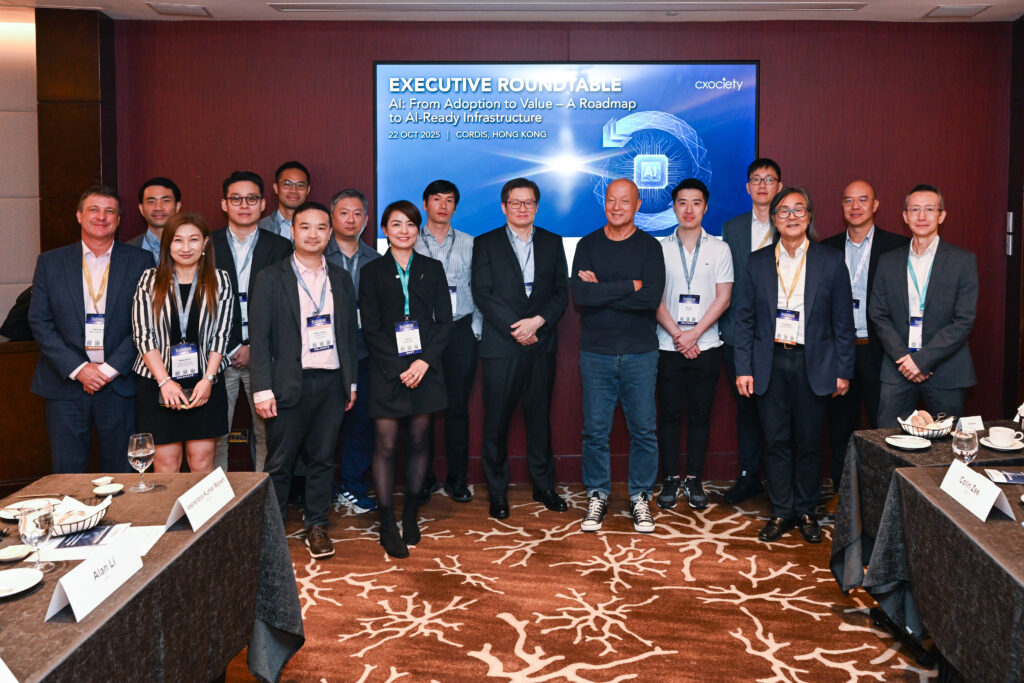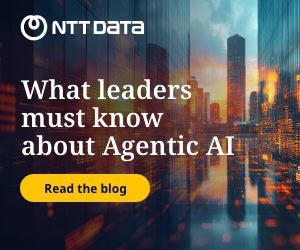The gap between AI ambition and AI reality is growing. While enterprises globally have deployed AI systems in their workflows, the infrastructure and organisational challenges lurking beneath the surface threaten to derail meaningful progress toward value creation.
At a recent FutureCIO roundtable discussion in Hong Kong, organised in collaboration with Digital Realty and AT&T, technology leaders from organisations spanning banking, asset management, retail, and social services shared a significant realisation: implementing AI at scale is less about technology and more about the underlying infrastructure, people, and processes. And to address it, you need wholesale organisational transformation.
The infrastructure essential

"Infrastructure is key," declared Robert Ho, director of market development at Digital Realty, which owns and operates more than 300 data centre facilities across 25 countries. "If you haven't got the right infrastructure connectivity, how are you going to bring this data together to process and consume?"
Ho's assessment reflects a broader industry reality. As Mark Vaux, professional services director at AT&T Consulting, emphasised during the discussion, the foundational layer of network infrastructure often determines whether AI initiatives succeed or fail. "The data has to come together, so the networks need to be smart," Vaux explained. "There needs to be low latency in the transfer. And the data needs to be protected."
What we consume today is about one-thirtieth of the bandwidth potential by 2030 with 6G commercialisation. The implications extend beyond mere bandwidth but with capacity. At Singapore Tech Week, Ho observed commercial SSD drives capable of storing 155 terabytes — a form factor in the size of a mobile phone that seemed impossible just years ago. "That just shows you the pace of technology that's coming down," he noted.
Yet infrastructure readiness varies dramatically across the region. The discussion revealed that most organisations remain in the early stages of AI adoption, with few having achieved enterprise-wide integration.
The service vs. build calculus

Colin Zee, who leads global AI programs for HSBC's CTO office, articulated a pragmatic approach: For lower-risk internal applications, organisations should prioritise speed over custom infrastructure. "Buy a service. Don't bother [with building it] if you want speed to value," Zee emphasised. His nine-month journey to get production approval for GitHub Copilot which is now deployed to 30,000 developers globally also revealed the importance of navigating people and process challenges, rather than focusing solely on technical implementation.
Yet, this approach doesn't scale to every use case, particularly in highly regulated industries where data sovereignty and security concerns dominate decision-making.
One delegate described navigating stringent requirements. "The banking regulatory requirement is the highest in Hong Kong," he explained. "Before we implement AI, we have to go through an independent assessment and comply with requirements in terms of the AI governance framework."
Another delegate to the roundtable detailed how the institution leverages AI defensively to combat AI-enabled fraud. "We now develop some new technology within our own tech team to counter deepfakes," he elaborated. The bank has shared these innovations with regulators through the Hong Kong Monetary Authority's generative AI sandbox.
A delegate from a more established traditional banking institution added another dimension: integrating AI across acquired entities with disparate data warehouses and application stacks. He added that as banks set up GPU clusters, data warehouses, and even AI lab, they realised that they have to take a step back and go back and do the integration again.
The underlying challenge remains data related. "You need to fix the data. You need to converge on a common data warehouse. You need to fix some of the legacy applications and modernise them," declared the delegate.
The 70% challenge: people and process

Marco Cheng, chief digital officer at the Chinese YMCA of Hong Kong, offered an illuminating perspective on what truly drives AI success. His organisation deployed AI agents using retrieval-augmented generation (RAG) to help social workers comply with government protocols and guidelines.
"At the beginning, we focused on the technical, technology side, but after that, we started focusing more on the people, because that's where the true value lies," Cheng explained. His organisation adopted what he called the "10-20-70 approach" for managing AI projects: 10% for algorithms, 20% for technical infrastructure, and 70% for people and processes.
The organisation also adopted a "learning by doing" philosophy, with extensive tracking and monitoring of how staff utilised AI agents, including the questions they asked and feedback on the outputs.
This human-centric framework reflects emerging best practices in which workforce readiness and cultural transformation are as crucial as technological prowess.
Industry-specific adoption patterns

Different sectors face distinct challenges and opportunities related to AI. Javan Lau, IT director at Embry (H.K.) Limited, described management concerns about accuracy and security, particularly for back-end applications.
One delegate emphasised the governance challenges posed by AI in investment decision-making and client reporting. "The emphasis is more on the governance, making sure that everyone's adhering to the best practices and requirements," he explained.
A delegate noted the challenges with power consumption at the infrastructure level. Discussions with a networking vendor about AI data centre switches revealed requirements so substantial that the current power capacity could support only a minimal rack deployment.
Another delegate whose organisation is one of Asia's largest health and beauty retailers, described navigating AI adoption across multiple countries. "The challenge is to collaborate across different countries with different data cultures, different regulations and their own practices."
The ecosystem imperative
Digital Realty's Ho emphasised that modern data centres must evolve beyond "space and power" to become comprehensive ecosystems. "We're the meeting place," he explained, describing how Digital Realty connects enterprises with carriers, CDNs, internet exchanges, and cloud service providers within their facilities.
This ecosystem approach extends to innovation support as well. Digital Realty established an Innovation Lab in Ashburn, Virginia, with approximately 20 racks where customers can test use cases with leading solution providers before committing to full deployments.

AT&T's Vaux underscored the importance of vendor-agnostic consulting that helps organisations navigate choices between on-premise, cloud, and hybrid approaches. "We've got a team with multiple skills," he noted, describing AT&T's regional presence across Hong Kong, Singapore, Japan, India, Malaysia, and Australia. "We give the best advice. We help you deploy; we help you pilot, we help you deliver."
Data sovereignty reshapes infrastructure decisions
Ho identified data sovereignty as an increasingly critical factor reshaping infrastructure planning. "A lot more governments are talking about sovereign AI, sovereignty of their data," he observed. Australia and Singapore lead these initiatives, setting baselines that influence regulations across Southeast Asia.
Indonesia now requires even basic internet infrastructure to be based locally rather than solely in Singapore, the traditional regional hub. Hong Kong's regulators similarly mandate local storage of client data. "That's not going to go away," Ho emphasised. "How do you deal with it? I think that will be the million-dollar question moving forward."
This trend intersects with security concerns that extend beyond the physical location of data. Governments are increasingly regulating not just where data resides, but also who can access it from outside national borders. India's telecommunications department, for instance, requires vetting of external network access.
The future blueprint
As the discussion concluded, both Ho and Vaux emphasised that successful AI adoption requires holistic organisational transformation rather than isolated technology investments.
"It's a journey," Ho summarised. "Take that step. Run or walk at your own pace but take that journey. That journey is top down as well as, bottom up." Organisations must secure buy-in from the C-suite while empowering working-level staff who ultimately determine whether implementations succeed or fail. "If the C-suite pushes a strategy that the working level doesn't believe in or not trained for, you're bound to fail," he cautioned.
Vaux echoed this comprehensive perspective. "It's the next-generation organisational budget," he said. "Everybody has to walk in together." Tomorrow's AI leaders will be those who have learned to balance speed with security, investment with agility, and innovation with governance today.






